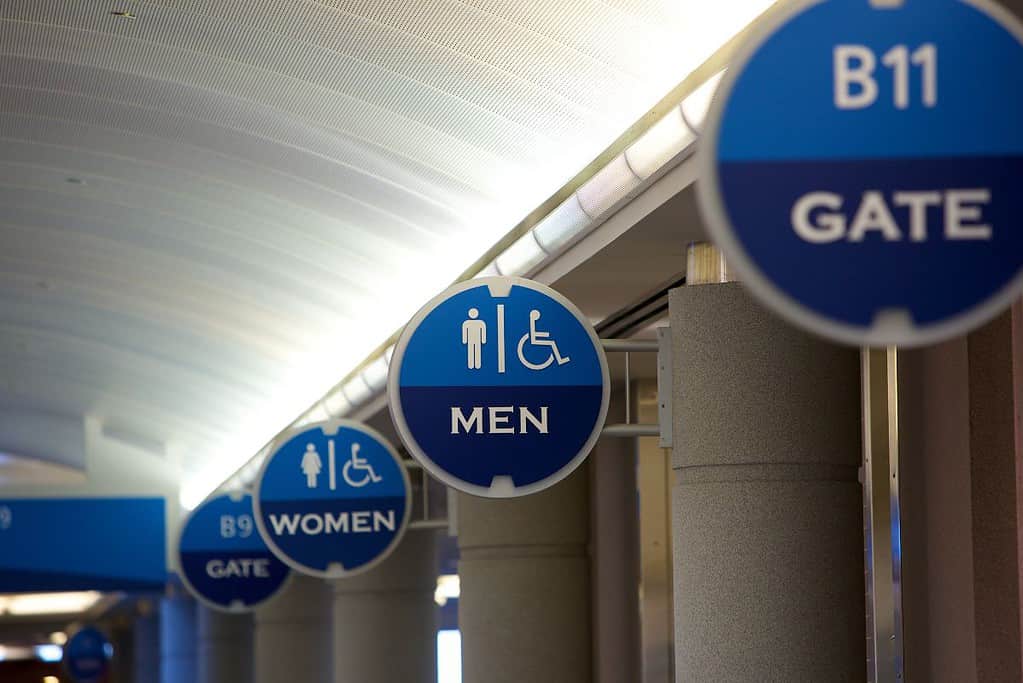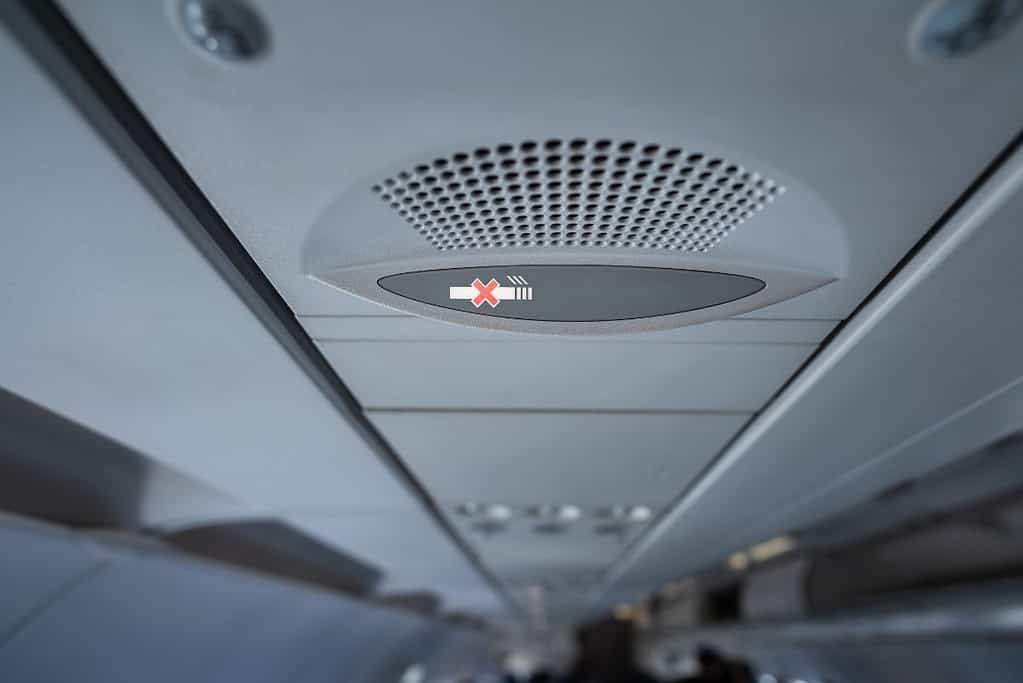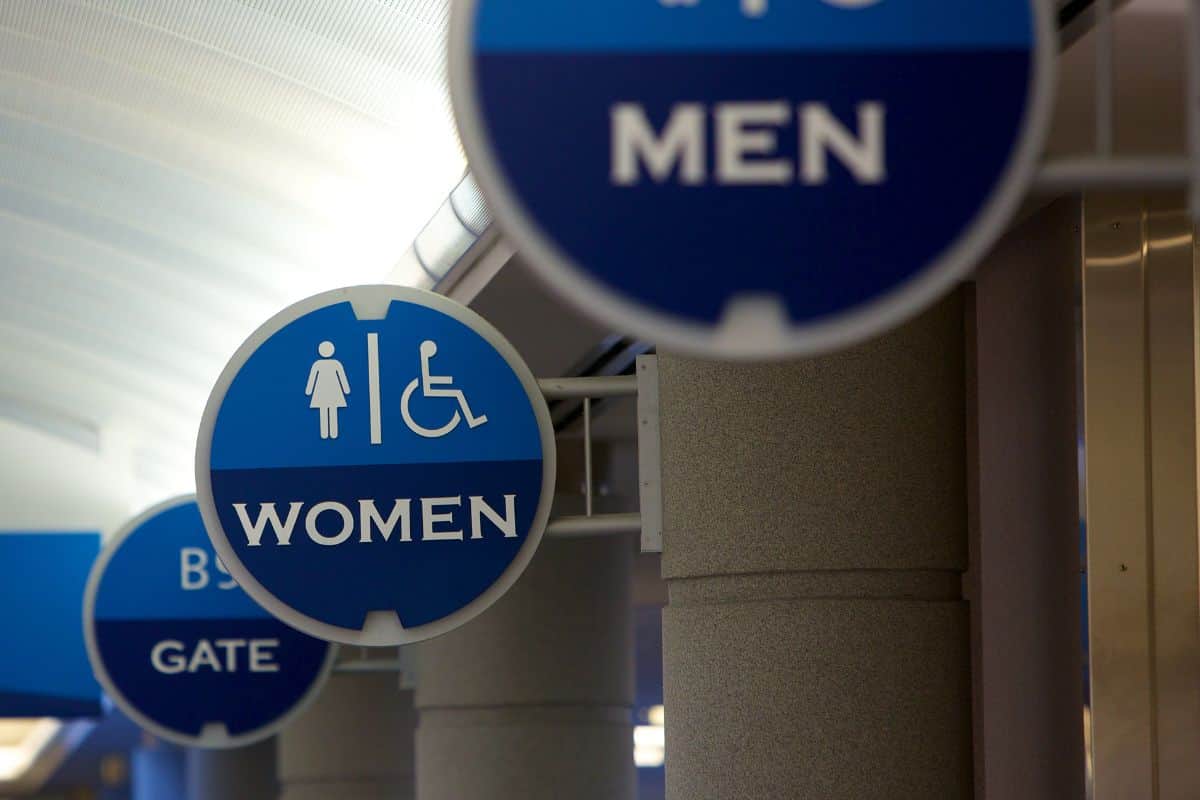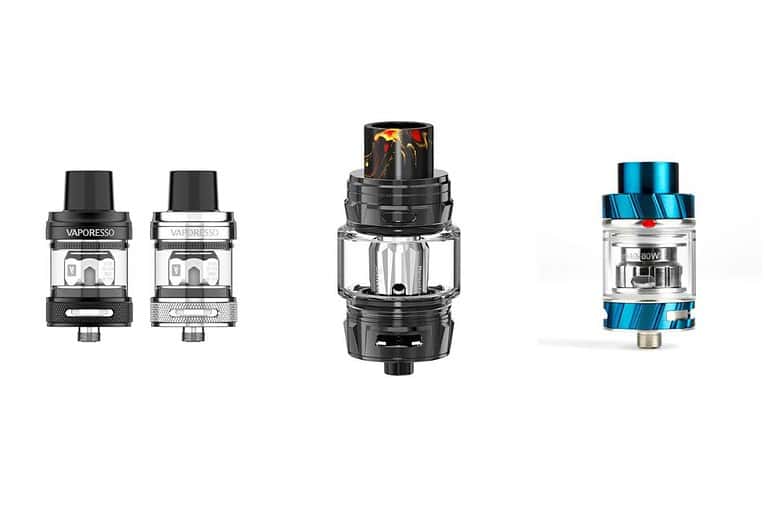Vaping in Airport Bathroom: Rules and Tips
Vaping, or the use of e-cigarettes and other electronic nicotine delivery systems, has become increasingly popular over the past few years. As the prevalence of vaping continues to rise, many public spaces such as airports have implemented strict policies to prevent smoking and vaping in their facilities. However, some vapers have found ways to secretly use their devices in places where it is prohibited, like airport bathrooms.
Getting caught vaping in an airport bathroom can have serious consequences. Not only is vaping prohibited in most airports, but it is also against the law to use electronic cigarettes in restricted areas. Offenders may face fines, legal action, and potential problems with traveling. It is essential to follow airport regulations and respect the health and safety of fellow travelers.
Airport security and staff enforce designated smoking areas to ensure the safety and comfort of all travelers, but stealth vaping has become a challenge for them. The discreet nature of e-cigarettes can make it difficult for airport personnel to deter rule-breakers from vaping in restricted spaces such as bathrooms. This practice not only poses a risk to the user but may also compromise the air quality and create inconvenience for fellow travelers who come to use the facilities.
To address this issue, airports may need to invest more time and resources into educating the public, as well as their staff, about the risks and consequences of vaping in prohibited spaces. By reinforcing these policies, airport authorities can minimize the occurrence of stealth vaping within their premises and maintain a comfortable environment for all passengers.
NEW CUSTOMER DISCOUNT
Save 15%
15% OFF YOUR ENTIRE ORDER FOR NEW CUSTOMERS USE CODE WELCOME15!

Table of Contents
What Is Vaping
Vaping is the act of inhaling and exhaling an aerosol, often referred to as vapor, produced by an electronic cigarette (e-cigarette) or similar device. E-cigarettes are battery-powered devices that heat a liquid solution, called e-liquid, into an inhalable vapor. The e-liquid typically contains nicotine, propylene glycol, glycerin, and flavorings.
There are various types of e-cigarettes, including vape pens and pod-based devices. Vape pens are pen-shaped devices that typically consist of a battery, a heating element, and a refillable tank for holding the e-liquid. Pod-based devices, on the other hand, are compact e-cigarettes that use pre-filled or refillable pods containing the e-liquid.
E-cigarettes have gained popularity as an alternative to traditional tobacco cigarettes. Some users prefer them because they are less harmful than regular cigarettes and can be used in places where smoking is prohibited. However, it’s essential to note that vaping is not entirely risk-free, especially for young people, pregnant women, and people with pre-existing health conditions.
One common concern about vaping is the use of e-cigarettes in restricted areas such as airports. While some users may attempt to stealthily vape in airport bathrooms, this practice is not legal or recommended. It’s important to follow the rules and regulations of each facility and prioritize the health and safety of others in public spaces.
The market for e-cigarettes has expanded in recent years, offering different options for users, from refillable devices to more convenient disposable vapes. Making informed choices and following appropriate guidelines can help users maintain a responsible approach to vaping.
Regulations for Vaping in Airport

Air travel has strict rules and regulations to ensure the safety of passengers, crew members, and the aircraft itself. Vaping in airports, especially in restricted areas such as bathrooms, can lead to potential consequences. In this section, we will discuss the regulations enforced by the Transportation Security Administration (TSA) and the Federal Aviation Administration (FAA) regarding vaping in airports.
Can You Vape In An Airport Bathroom
In airports around the world, vaping in airport bathrooms is strictly prohibited. The act of vaping, which involves inhaling and exhaling vapor produced by an electronic cigarette or similar device, is considered a violation of airport regulations and poses potential risks to both the individual engaging in vaping and the general public. The Transportation Security Administration (TSA) explicitly states that vaping in airport bathrooms is not allowed, as it may activate smoke detectors, causing unnecessary alarm and potential disruptions. Moreover, the vapor emitted during vaping can create a mist-like appearance, which may lead to confusion among other travelers and airport staff, potentially triggering security concerns. To ensure the safety and comfort of all passengers, airports maintain strict policies against vaping in any restroom facility.
TSA Regulations
The TSA has clear guidelines on how to transport electronic cigarettes and vaping devices in carry-on bags. According to the TSA’s policy, e-cigarettes, vape pens, and other electronic nicotine delivery systems must be in your carry-on luggage or in your pockets. They are strictly prohibited in checked bags due to the risk of fires caused by lithium batteries.
Though you can carry a vaping device in your carry-on, it’s important to remember that using it within the airport or on a flight is prohibited by most airlines and in many airports. If caught vaping in restricted areas such as bathrooms, you may face consequences from airport security or law enforcement.
FAA Regulations
The FAA also has regulations in place to prevent the use of e-cigarettes and vaping devices on commercial flights. According to FAA regulations, electronic smoking devices are not allowed to be used on any U.S. commercial flights, including domestic and international flights. The rule also extends to foreign airlines operating within or entering the United States.
Breaking these rules can lead to severe penalties, including potential removal from the flight or additional fines.
When traveling with a vape, it’s essential to be aware of the TSA and FAA regulations, as well as any regulations specific to the airline or airport you’re traveling through. It is crucial to follow the rules to ensure a safe and hassle-free travel experience for everyone on board.
Laws on Vaping in Public Spaces
| Location | Vaping Restrictions and Laws |
|---|---|
| United States | Vaping regulations vary by state and locality. Many states have implemented restrictions on vaping in indoor public spaces, including bars, restaurants, and workplaces. Check local laws for specifics. |
| United Kingdom | Vaping is generally allowed in most public places, but some areas, such as public transport and certain indoor locations, may have restrictions. Vaping is banned on commercial flights. |
| Canada | Laws regarding vaping in public spaces vary by province and territory. Some areas allow vaping indoors, while others have restrictions similar to smoking. Check local regulations for details. |
| European Union | Vaping regulations vary by EU member state. The EU Tobacco Products Directive restricts advertising and imposes limits on nicotine content in e-liquids. Check specific country laws for public space restrictions. |
| Australia | Vaping laws differ by state and territory. Some areas ban vaping in enclosed public spaces, while others may allow it with restrictions. Check local regulations for details. |
| New Zealand | Vaping regulations vary by region. Some cities and regions have restrictions on vaping in public places. Check local bylaws for specifics. |
| Japan | Vaping is generally allowed in outdoor public spaces, but indoor vaping is restricted in many areas, including restaurants, public transport, and government buildings. |
| Singapore | Vaping is strictly regulated, and it is illegal to vape in most public places. There are heavy fines and penalties for violations. |
| South Africa | Vaping laws vary by province, and some provinces have imposed restrictions on vaping in public spaces, similar to smoking regulations. |
| India | Vaping laws vary by state, and some states have banned vaping altogether or restricted it in public places. Check local regulations for details. |
| UAE (United Arab Emirates) | Vaping is regulated, and there are restrictions on vaping in indoor public spaces. Be aware of local regulations and penalties for violations. |
In many countries, the use of e-cigarettes, also known as vaping, is subject to various restrictions, which vary depending on the jurisdiction. These regulations can affect how e-cigarettes are used in public spaces like airports.
In certain places, vaping in public areas like airports is not allowed. For example, the e-cigarette users commonly stealth vape in places where e-cigarette use is prohibited, such as airports. In other cases, vaping may be allowed in designated smoking areas. However, this is different from place to place, and vapers should be cautious about the local regulations.
Law enforcement and airport staff play a crucial role in ensuring that these regulations are followed. For those caught violating these rules, penalties can range from warnings to fines, and in some cases, individuals may be escorted off the premises.
In the context of bathroom usage, airport staff and regulatory bodies may monitor entrances and exits or even implement deterrents to discourage people from vaping in these spaces. Some airports have also installed smoke detectors for vape in their bathrooms in an attempt to discourage and detect vaping activities in such closed spaces. Although bathrooms are not directly mentioned in most regulations, they often fall under the broader category of restricted public areas.
As vaping and e-cigarettes continue to grow in popularity, it is essential for vapers to understand and abide by the regulations governing their usage in public spaces like airports. These rules help protect both vapers and non-vapers from potential harm and ensure a smoother travel experience for everyone.
Implication of Vaping in Airport Bathroom

Vaping in airport bathrooms can raise several concerns, particularly regarding safety and the potential for setting off smoke alarms. E-cigarette users sometimes resort to “stealth vaping” in areas where e-cigarettes are prohibited. Passengers may be tempted to use airport bathrooms as a discrete location for vaping, despite potential consequences.
Smoke alarms in airport bathrooms may be activated by e-cigarette vapor, leading to false alerts. These false alarms can cause unnecessary panic and disruption, further burdening airport security and staff. Although e-cigarette vapor is different from traditional cigarette smoke, it can still be dense enough to trigger alarms in confined spaces like bathrooms.
Regulations governing e-cigarette use in airports vary from state to state, and even airports within the same country may enforce different rules. Some airports explicitly ban e-cigarette use, while others designate specific zones for vaping. As travelers increasingly embrace e-cigarettes, many airports work to clarify their rules and raise awareness among passengers. However, the ongoing lack of consistent regulation can make it difficult for users to understand where vaping is permitted, leading some to turn to airport bathrooms as a workaround.
While vaping is widely considered less harmful than smoking traditional tobacco cigarettes, the long-term effects of e-cigarettes are still being studied. The use of e-cigarettes in confined public spaces like airport bathrooms can expose non-users to secondhand e-cigarette vapors, potentially posing health risks.
It is important for airport management and security personnel to be vigilant about this issue. Implementing clear signage and actively enforcing regulations on e-cigarette use can help ensure that airport environments remain safe and comfortable for all travelers.
Effects of Vaping on Airplanes

Vaping on a plane can have unforeseen consequences due to the unique environment of an aircraft. Air pressure plays a significant role in affecting how a vape functions in flight. When the cabin pressure decreases, it can cause vape devices to leak, posing a risk for both the user and other passengers.
While some passengers might attempt to vape discreetly in an airplane bathroom, it is essential to understand that this action is not only against regulations but also poses safety concerns. E-cigarette use in air transit is prohibited due to those concerns and the potential for malfunctions under fluctuating air pressure.
Furthermore, vaping on a plane can lead to an increase in smoke and vapor. This visible presence can trigger alarms, leading to a possible emergency response from the crew and even an emergency landing. The consequences for vaping on a plane can be severe, including fines, legal charges, and even being banned from future flights.
To cope with the urge to vape during long flights, passengers can explore various methods to get nicotine out of their system faster or learn about the vaping withdrawal timeline to better prepare for the journey. Being aware of the effects of a cart hit and duration it stays in one’s system can also help in managing the cravings during air travel.
In conclusion, it is imperative to respect the regulations and avoid vaping during air travel. Passengers can look for alternative ways to manage their cravings while keeping in mind the safety and comfort of everyone on board.
Safety Measures
Carry-on Baggage Restrictions
When it comes to vaping devices, only the non-tremendous can be carried in carry-on baggage. It’s essential for passengers to understand the rules for carrying vaping devices on planes since the safety of all passengers is a priority.
One critical aspect related to vaping devices is batteries, especially lithium batteries. These batteries should always be removed from the device and stored separately in a protective case before placing them in carry-on luggage. It is recommended to keep spare lithium batteries in a clear plastic bag for easy identification during the security screening process.
Checked Baggage Restrictions
On the other hand, vaping devices, including e-cigarettes, should not be placed in checked baggage. This restriction mainly pertains to the potential hazards of lithium batteries that may pose a risk if not handled or stored correctly.
It is necessary for travelers to ensure that their checked luggage does not contain any vaping devices or accessories. In case of doubt, consulting airport security personnel or airline representatives is recommended. Following these guidelines will help to maintain a safe and secure environment for all those traveling in and around airports.
Potential Penalties and Repercussions
| Violation | Potential Penalties and Repercussions |
|---|---|
| Vaping in a Restricted Area | – Fines or citations issued by airport security or law enforcement.<br>- Detainment or questioning by airport authorities.<br>- Confiscation of vaping devices or e-liquids.<br>- Possible arrest or criminal charges, depending on local laws. |
| Violating Airport Rules and Regulations | – Warning or reprimand from airport staff.<br>- Removal from the airport premises, potentially missing your flight.<br>- Airport bans or restrictions on future travel. |
| Setting Off Smoke Alarms | – Activation of smoke detectors can trigger fire alarms and disrupt airport operations.<br>- Evacuation of the terminal, causing delays and inconvenience for passengers.<br>- Potential reimbursement of costs associated with alarm response. |
| Endangering Passengers or Crew | – Disrupting or causing discomfort to fellow travelers or airline crew can result in complaints or legal actions.<br>- Airlines may refuse boarding or remove passengers from flights for disruptive behavior. |
| Legal Consequences | – Depending on local laws and regulations, vaping in prohibited areas may lead to fines, arrest, or legal actions.<br>- Criminal charges could result in fines, probation, or even jail time in severe cases. |
| Security Screening Delays | – Vaping devices and liquids may trigger additional security checks or delays during screening.<br>- Confiscation of vaping products by airport security. |
| Damage to Airport Property | – Any damage caused by vaping, such as burns or residue on surfaces, may lead to repair costs or fines.<br>- Possible civil liability for damaging airport property. |
| Inconvenience to Other Passengers | – Complaints from other travelers or disruptions to the airport’s normal operation may result in penalties or removal from the airport. |
Vaping in airport bathrooms may lead to various penalties and repercussions for those who are caught. One possible consequence is the imposition of fines. Many airports have implemented strict rules and regulations against the use of e-cigarettes indoors, which include the possibility of monetary penalties for violations. The amount of these fines may vary depending on the airport and jurisdiction.
In some cases, airports may enforce other forms of penalties, such as the confiscation of vaping devices or being escorted out of the airport premises. It is important for travelers to be aware of the specific rules and regulations in place at the airport they are traveling to or from.
Further, getting caught vaping in an airport bathroom could lead to damage to one’s reputation. As airports are public spaces with a high level of security, individuals caught engaging in prohibited activities could face public scrutiny and potential embarrassment. This could have an impact on a person’s personal and professional life, especially if their employer becomes aware of the incident.
Moreover, vaping in airport bathrooms may create an unsafe and uncomfortable environment for other travelers. The aerosols produced by e-cigarettes may potentially contain hazardous substances, posing a risk to the health and well-being of other passengers. This could result in airports taking more stringent measures to prevent vaping indoors, leading to even harsher penalties and repercussions for violators in the future.
In conclusion, the potential penalties and repercussions for vaping in airport bathrooms range from fines to damage to one’s reputation and creating an unsafe environment for fellow passengers. Awareness of these potential consequences is crucial for travelers who use e-cigarettes to ensure they abide by airport rules and maintain a safe and comfortable travel experience for all.
Alternatives to Vaping in Airports
Designated Areas
Instead of vaping in airport bathrooms, travelers can make use of designated smoking or vaping areas. Many airports offer these spaces to ensure that passengers who use e-cigarettes or vape devices can do so without violating rules or inconveniencing others. These areas are typically designed with proper ventilation systems and offer comfortable seating arrangements for those who want to vape or smoke.
In addition to reducing the chances of being caught violating airport regulations, using designated areas instead of bathrooms can provide a more pleasant vaping experience. The well-ventilated, smoke-free environment allows all passengers to stay comfortable during their time at the airport.
Disposable Vapes
Disposable vapes are another alternative for those who want to vape in airports. Devices like the Candy King Air Disposable Vape allow users to enjoy a compact vaping experience with minimal hassle. These single-use vape devices usually come prefilled with e-liquid containing nicotine and offer a consistent vaping experience.
Similarly, the Elf Bar BC5000 Disposable Vape is a popular option among travelers as it provides up to 5000 puffs and features a battery capacity of 650mAh, offering convenience for those on the go. The Esco Bars Mesh 6000 Puffs Disposable Vape is another choice for vapers seeking a powerful, yet compact vaping solution.
If airports allow vaping only in designated areas, disposable vapes can be used discretely as they typically produce less vapor and smell compared to regular vaping devices. Furthermore, they are easily disposed of after use, eliminating the need to carry a vape device and e-liquid bottles throughout the airport or on your flight.
By considering these alternatives, such as using designated areas or opting for disposable vapes prior to airport travel, passengers can comply with regulations and maintain a comfortable, smoke-free environment for all.
Essential Items for Vaping Travellers
| Essential Item | Description |
|---|---|
| Vaping Device | Your preferred vape device, whether it’s a mod, pod system, or pen. |
| E-Liquids | Sufficient e-liquids to last your trip, stored in leak-proof bottles. |
| Coils/Atomizers | Spare coils or atomizers in case the ones in your device burn out. |
| Battery and Charger | Extra batteries (if using a mod) and a charger compatible with your device. |
| Carrying Case or Bag | A protective case or bag to keep your vaping gear organized and safe. |
| Cleaning Supplies | Cleaning tools like cotton swabs, paper towels, and alcohol wipes. |
| USB Cable | A USB cable for charging your device, compatible with your charger. |
| Travel Adapters | If traveling internationally, consider adapters for different plug types. |
| Nicotine Replacement | If you’re trying to quit smoking, bring nicotine replacement products. |
| User Manual | The user manual for your vaping device, especially if it’s new or complex. |
| Personal ID and Documentation | Keep your ID, passport, and any relevant documentation readily accessible. |
| Travel Pouch | A small pouch or bag to keep your vaping items together and easily accessible. |
| Spare Parts | Any spare parts specific to your device, such as O-rings or gaskets. |
| Portable Ashtray | If vaping in designated areas, a portable ashtray for disposing of used coils or pods responsibly. |
| Maintenance Tools | Tools for minor repairs or adjustments to your device, if needed. |
| Travel-Sized Accessories | Consider compact drip tips or tanks to save space. |
| Labels and Warnings | Clearly label e-liquid bottles with nicotine content and warnings. |
When travelling, it’s crucial for vapers to have a well-prepared kit to enjoy their vaping experience without any hiccups. In this section, we’ll discuss essential items that every vaping traveler should consider packing.
First and foremost, make sure to carry enough vape juice to last throughout your trip. Running out of e-liquid can be a real inconvenience when you’re away from your usual sources, and airport bathrooms might not be the best place to replenish your supply.
Extra batteries and pods are also essential to ensure your device is always ready when you need it. Flight regulations require that spare lithium batteries be carried in your hand luggage, so pack them accordingly. Additionally, invest in a good quality vape pen charger suitable for your device to maintain optimal battery life and avoid risking a dead battery during your journey.
For those who prefer a more discreet and travel-friendly option, 5 percent nic disposable vapes can be a convenient alternative. These offer a hassle-free experience, as they are generally pre-filled and pre-charged, making them an ideal choice for on-the-go vaping during your travels.
In conclusion, being well-prepared with essential items such as vape juice, extra batteries, pods, chargers, and considering disposable vapes for convenience will ensure a smooth vaping experience while travelling. Remember, airport facilities and regulations can vary, so always check local policies before attempting to vape in public areas like airport bathrooms.
Browse popular vape collections:
- Nicotine Disposables
- 2000 Puff Nicotine Disposable Vapes
- 2500 Puff Nicotine Disposable Vapes
- 5000 Puff Nicotine Disposable Vapes
- 6000 Puff Disposable Nicotine Vapes
- 7000 Puff Nicotine Disposable Vapes
- Disposable Vape Deals
- Best Vape Brands
- 8000 Puff Nicotine Disposable Vapes
- 9000 Puff Nicotine Disposable Vapes
- 5% Nicotine Disposable Vapes
- Rechargeable Nicotine Disposable Vapes
- Vape Coils
- Dab Wax Pens
- Dab Wax Pen Battery
- Yocan Vapes
- Vape Cases
Frequently Asked Questions
Are e-cigarettes allowed in airport restrooms?
E-cigarettes are generally not allowed in airport restrooms. Policies may vary from airport to airport, but many implement restrictions on vaping in indoor areas, including restrooms. It’s important to abide by the rules of the particular airport you’re in. Vaping in prohibited areas may result in penalties.
Is it permissible to use a vape pen in public restrooms at airports?
Using vape pens in public restrooms at airports is typically not allowed, as e-cigarette use is often prohibited in indoor spaces, like restrooms, throughout airports. Be sure to check and follow the guidelines of the specific airport you’re visiting to avoid any issues.
Which airports have designated areas for vaping?
Some airports have designated areas for vaping or smoking. These areas may be located near terminals, outside smoking zones, or specified rooms. Each airport has its setup and regulations, so it’s advisable to inquire at the airport’s information desk or review its policies online to locate these areas.
What is the risk of using a vape in an airport bathroom?
Using a vape in an airport bathroom carries several risks. You may violate airport policies, which can lead to penalties or even being denied boarding on your flight. Additionally, vaping in an enclosed space like a bathroom can potentially trigger smoke detectors, causing unnecessary disruption and possible legal consequences.
How do airports handle passengers found vaping in restrooms?
Airports deal with passengers found vaping in restrooms on a case-by-case basis. Consequences may include a warning, a fine, or even removal from the airport premises. In some instances, passengers may be banned from flying with certain airlines or face legal repercussions for violating airport policies.
Can vaping in an airport restroom trigger a smoke detector?
Vaping in an airport restroom can potentially trigger a smoke detector, as these devices are often sensitive to the presence of aerosols and particles in the air. The risk of triggering a smoke detector increases in confined spaces, like restrooms. To avoid any potential issues, it’s best to abide by airport regulations and avoid vaping in prohibited areas.




![What are vape detectors [& how to avoid triggering them] 16 What are vape detectors [& how to avoid triggering them]](https://vapessuperstore.com/wp-content/uploads/2023/01/rk6y74zc4k-768x512.webp)




